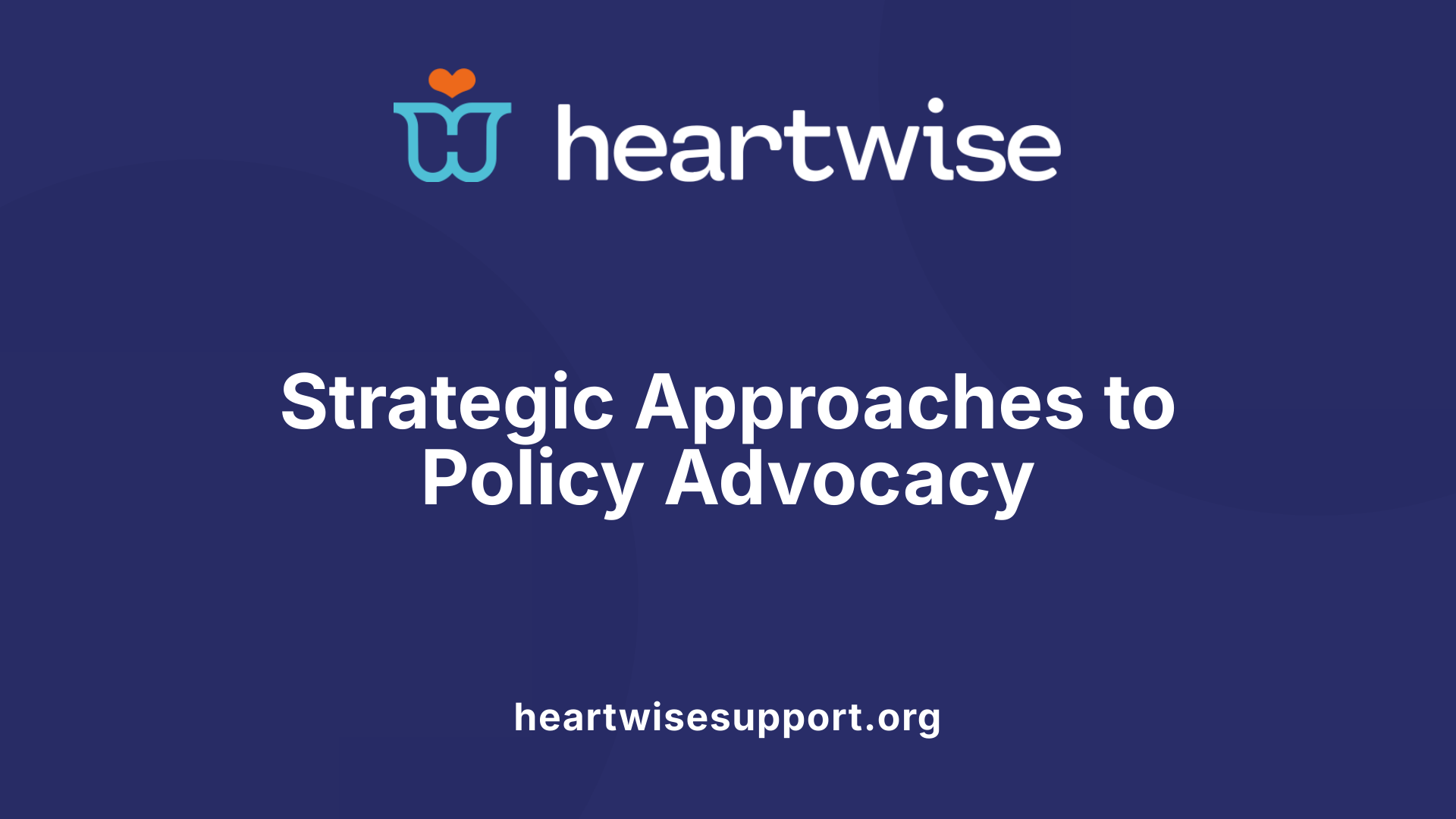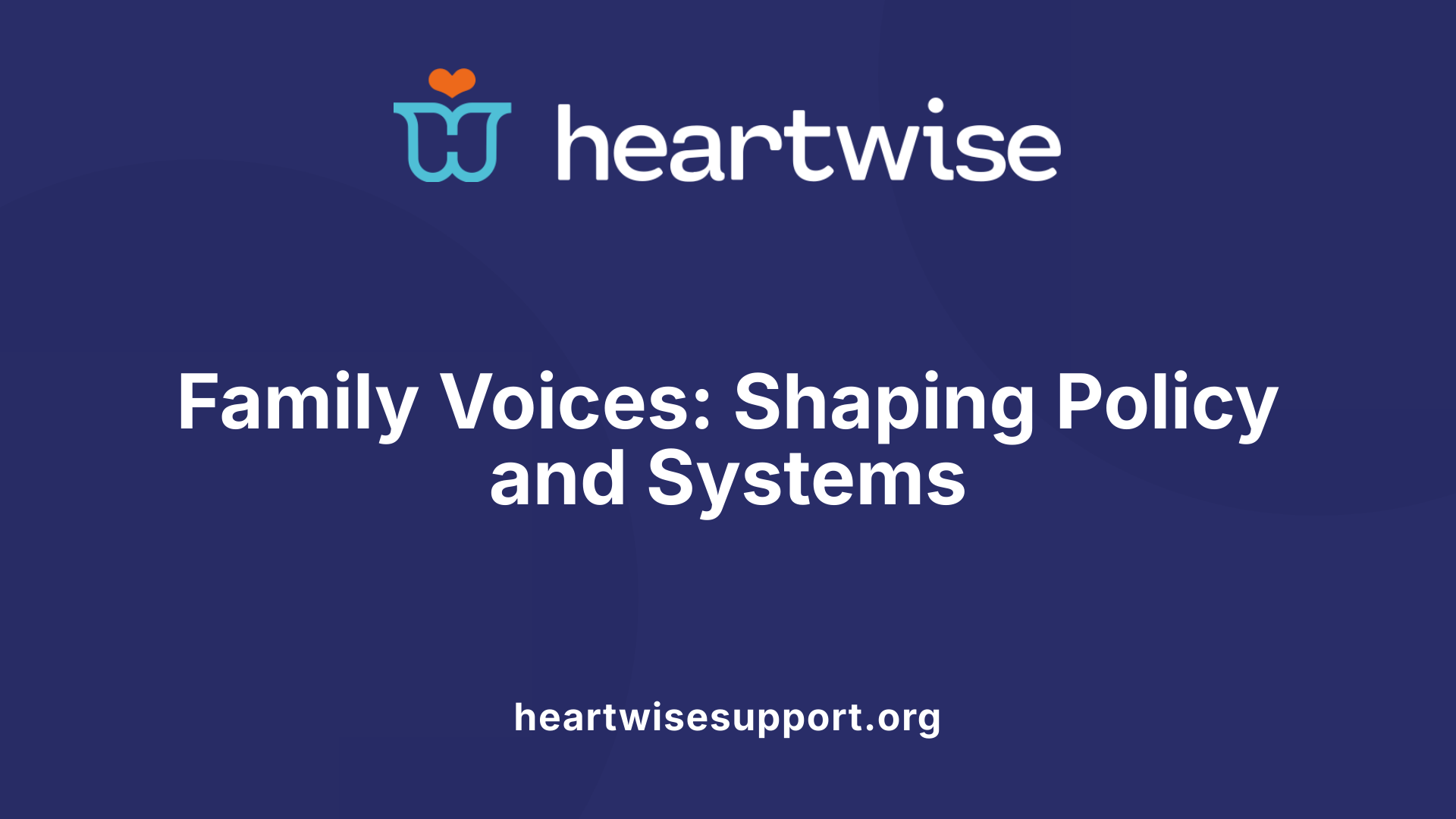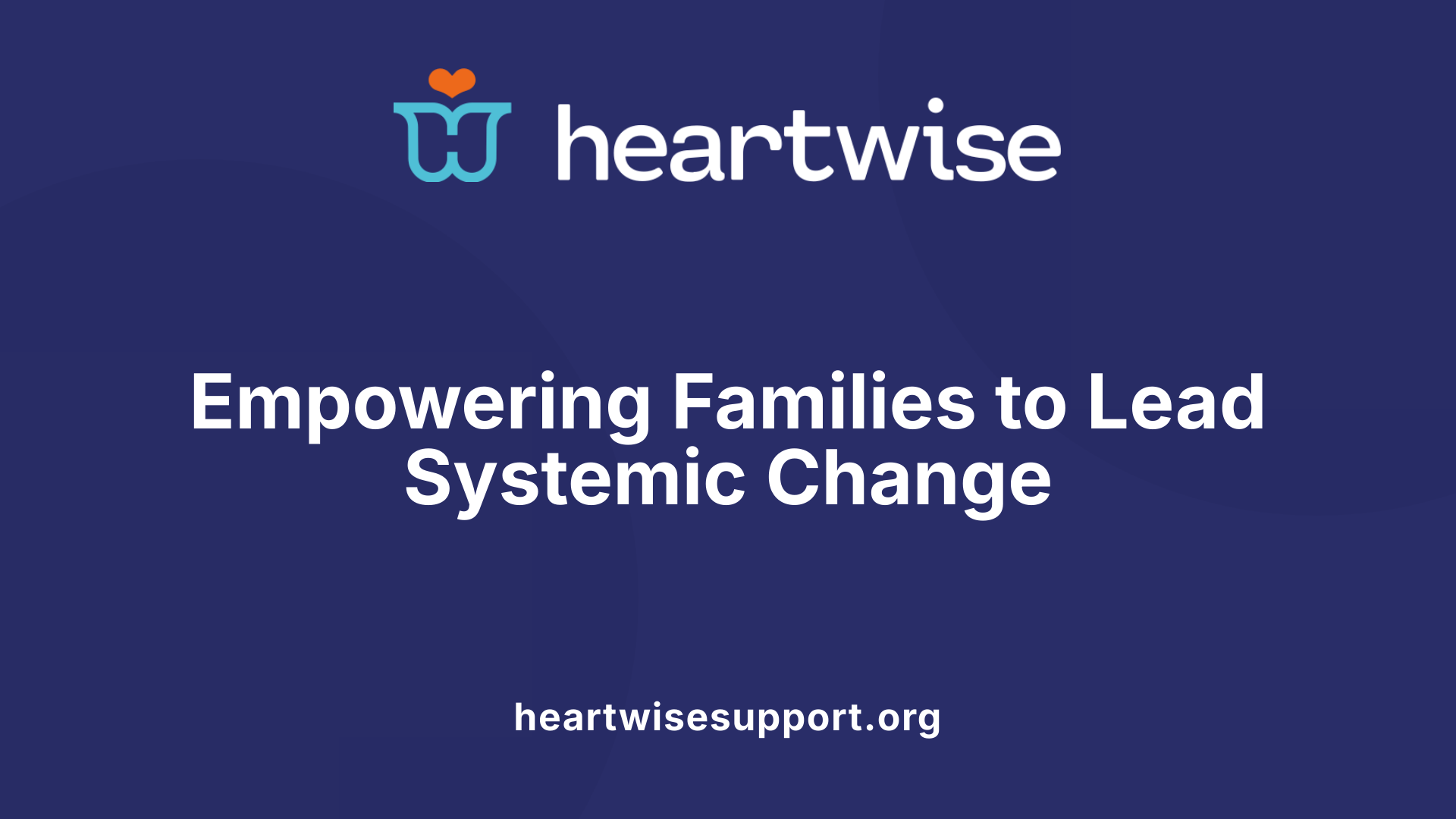Understanding the Impact of Family Advocacy
Family advocacy is a vital component in driving meaningful policy change that benefits children, individuals with disabilities, and entire communities. It involves equipping families with the knowledge, resources, and opportunities to influence decision-making processes within education, healthcare, and social services. From grassroots efforts to systemic reforms, family advocates play a crucial role in ensuring policies are equitable, inclusive, and responsive to community needs.
The Significance of Advocacy in Policy Development
Why is advocacy important in the policy process?
Advocacy plays a crucial role in shaping policies that promote social justice. It amplifies the voices of marginalized groups, ensuring their needs and rights are recognized during decision-making.
Through active engagement, advocacy influences legislation and policy priorities by directly working with lawmakers, mobilizing communities, and leveraging media campaigns. This process helps drive systemic change, making policies more equitable and inclusive.
Educating the public and policymakers is also a core aspect of advocacy. It raises awareness about social issues, fosters understanding, and builds support for necessary policy reforms. Advocates provide vital information, personal stories, and data to highlight community needs.
Effective advocacy encourages civic participation like voting, community organizing, and grassroots efforts, which apply pressure on institutions to act. By doing so, advocacy ensures that policies reflect the diverse interests and promote healthier, fairer communities.
Overall, advocacy is essential for transforming promising ideas into concrete, impactful policies that address social inequalities and enhance community well-being. It is a powerful tool for creating lasting change through collective effort and informed action.
Strategies and Methods of Family Advocates
What strategies and methods do family advocates use to influence policy?
Family advocates utilize a diverse toolkit of approaches to shape and improve policies affecting children and families. A foundational method is grassroots organizing, where advocates mobilize community members around shared concerns. This democratic approach involves encouraging families to share their stories, participate in events, and connect directly with policymakers.
Coalition-building is another vital strategy. Advocates form alliances with community organizations, service providers, schools, and other stakeholders. These partnerships amplify their voice and provide a united front, increasing their influence on legislative and policy discussions.
Crafting compelling messages is crucial in advocacy. Personal stories humanize policy issues, making them relatable and emotionally impactful. Coupled with data and research, these narratives help shape public debate and sway opinion.
Engagement in various activities enhances advocacy efforts. Lobbying efforts, such as meetings with legislators, testify at public hearings, and policy briefings, directly influence decision-makers. Simultaneously, media campaigns and social media outreach raise awareness and bring issues to a broader audience.
Building coalitions requires ongoing communication and trust. Regular meetings and collaborative planning help maintain momentum and share resources. Advocacy organizations also monitor policy developments to adapt strategies proactively.
The inclusion of family voices in policymaking ensures that policies are grounded in real-life experiences. Family members participate in advisory councils, public forums, and consultations, making the process more inclusive and effective.
Overall, successful family advocacy hinges on persistent, strategic efforts that combine community engagement, strategic communication, and coalition collaboration, all aimed at fostering policies that support the well-being and rights of children and families.
Effective Strategies for Achieving Policy Change

What are effective strategies for advocating for policy change?
Advocating for policy change requires a strategic mix of approaches tailored to the specific context, target audiences, and desired outcomes. Successful advocacy often combines multiple tactics to create a compelling and sustained effort.
One foundational strategy is educating stakeholders with robust research and clear communication. Using credible data and evidence-based reports helps to establish the urgency and importance of policy issues. Sharing stories from families and communities humanizes the data, making policy impacts tangible and relatable.
Building coalitions with diverse organizations amplifies influence,
The Central Role of Family Advocacy in Policy Change

What is the role of family advocacy in shaping policy change?
Family advocacy is essential in influencing and creating policies that impact children, families, and communities. It empowers parents, caregivers, and family members to become active participants in policy development processes.
Engaged families bring firsthand insights into their children's needs, challenges, and strengths. They participate in public discussions, grassroots movements, and formal policy forums, helping to shape laws and regulations that govern education, healthcare, and social services.
Programs like Head Start serve as prominent examples of family advocacy in action. Head Start actively involves families through their participation in decision-making bodies such as Parent Committees and Policy Councils. These platforms allow families to voice concerns, set priorities, and influence program direction.
The COFI model demonstrates how structured, five-step family empowerment processes can lead to policy changes like banning suspensions for young children and promoting restorative justice in schools. Such movements show that family advocates are trusted allies to policymakers, bringing credibility and community-driven perspectives.
Overall, family advocacy ensures that policies are more inclusive, rights-based, and aligned with the real-world experiences of those they serve. Their participation fosters legislation that is equitable and responsive, ultimately strengthening systems in education, healthcare, and social services.
Impact of Family Voices on Policy and Systems

How can family voices influence policymaking related to health, education, and social services?
Families hold powerful insights rooted in their real-life experiences, making their voices vital in shaping policies across health, education, and social services. Through active participation, families highlight specific needs and advocate for supportive policies that address issues like access to healthcare, quality education, and social safety nets. Policymakers are increasingly encouraged to evaluate how policies affect entire family dynamics, responsibilities, and cultural diversity, often employing a family impact assessment lens.
Engaging families directly in public discussions, hearings, and collaboration initiatives leads to more inclusive and effective programs. For instance, targeted interventions that involve family participation can improve youth outcomes, prevent behavioral issues, and support mental health. Policies supporting family stability—such as parental leave, affordable childcare, and community support networks—are critical in fostering resilient communities.
Furthermore, involving parents and family advocates optimizes policy relevance. Their insights ensure programs are tailored to actual family needs, which enhances their effectiveness and fairness. When families share their stories and experiences, they humanize data, making policy impacts tangible and compelling.
In summary, family voices influence policymaking by providing essential perspectives that drive reforms, ensuring that social systems are equitable, accessible, and capacity-building for all families.
Family Advocacy and Systemic Change: Success Stories and Future Directions

What are some success stories of family-led advocacy leading to policy improvements?
Family-led advocacy has played a crucial role in shaping policies across various sectors, notably in education and healthcare. These stories highlight how families, when empowered, can influence systemic change. One inspiring example is Justin Petkus, who championed the recognition of family life education within Head Start programs. His efforts helped elevate the role of Certified Family Life Educators (CFLEs), leading to professional acknowledgment and influencing program standards.
Another significant story involves families affected by rare genetic disorders such as Kleefstra syndrome. The Rhyne family and others working to raise awareness have established nonprofits, contributed to research initiatives, and successfully influenced policies on screening and funding for rare conditions. Their advocacy has led to greater recognition and resources for affected children.
Personal narratives also serve as powerful catalysts for change. Elizabeth Brasfield Scott shared her daughter's health crisis through social media, mobilizing community support and prompting health policy discussions. Her story exemplifies how personal experiences can humanize policy issues, generate awareness, and push for legislative action.
These impactful cases demonstrate that when families take active roles in advocacy, leveraging partnerships, media, and community support, they can foster meaningful policy reforms. Their efforts have resulted in improved access, better support systems, and increased funding for children and families in need.
How do these stories demonstrate the importance of empowerment and collaboration?
Empowerment enables families to speak up and participate actively in policymaking. Collaboration with professionals and community organizations strengthens their voice, creating a united front that is more persuasive to policymakers. These successes underscore that systemic change is often driven by stories that resonate widely, and these stories are most compelling when families are supported and equipped with knowledge and skills.
What are future directions for family-led advocacy?
Moving forward, families and advocates must continue building on these successes by fostering inclusive, culturally responsive, and sustained advocacy efforts. Enhancing training opportunities, leveraging technology, and expanding community engagement are vital. Additionally, increasing collaboration across sectors—education, health, legal, and social services—can amplify their influence. Ensuring that family voices are embedded in policy development at local, regional, and national levels will remain essential for creating equitable systems that truly meet the needs of all children and families.
Fostering a Culture of Family-Led Policy Change
The active participation of families in policy development and implementation is essential for creating more equitable, inclusive, and effective social systems. Family advocacy leverages lived experiences, personal stories, and collective action to influence legislative and systemic reforms across sectors like education, healthcare, and social services. Success stories from grassroots initiatives, community organizations, and national programs underscore the transformative power of empowered families. Building on these successes requires continued commitment to support family-led leadership, foster collaboration among stakeholders, and develop strategies that remove participation barriers. As families become more engaged and their voices heard, policies will better reflect community needs, fostering healthier, more resilient societies where every family has the opportunity to thrive.
References
- What Is a Family Advocate? | University of Phoenix
- Practical Reasoning for Policy Advocacy and Implementation
- The Power of Parent Advocacy: Seven Motivators for Change in ...
- The role of advocacy and empowerment in shaping service ...
- Applying Trauma-Informed Principles to Work with Family Advocates
- Engaging Families in Program and Policy Development to Ensure ...
- Enhance Parents' Advocacy and Leadership Skills | HeadStart.gov
- Parents as Advocates: Influencing Policymakers to Improve Public ...
- Understanding Public Policy and Advocacy Strategies – Family ...











